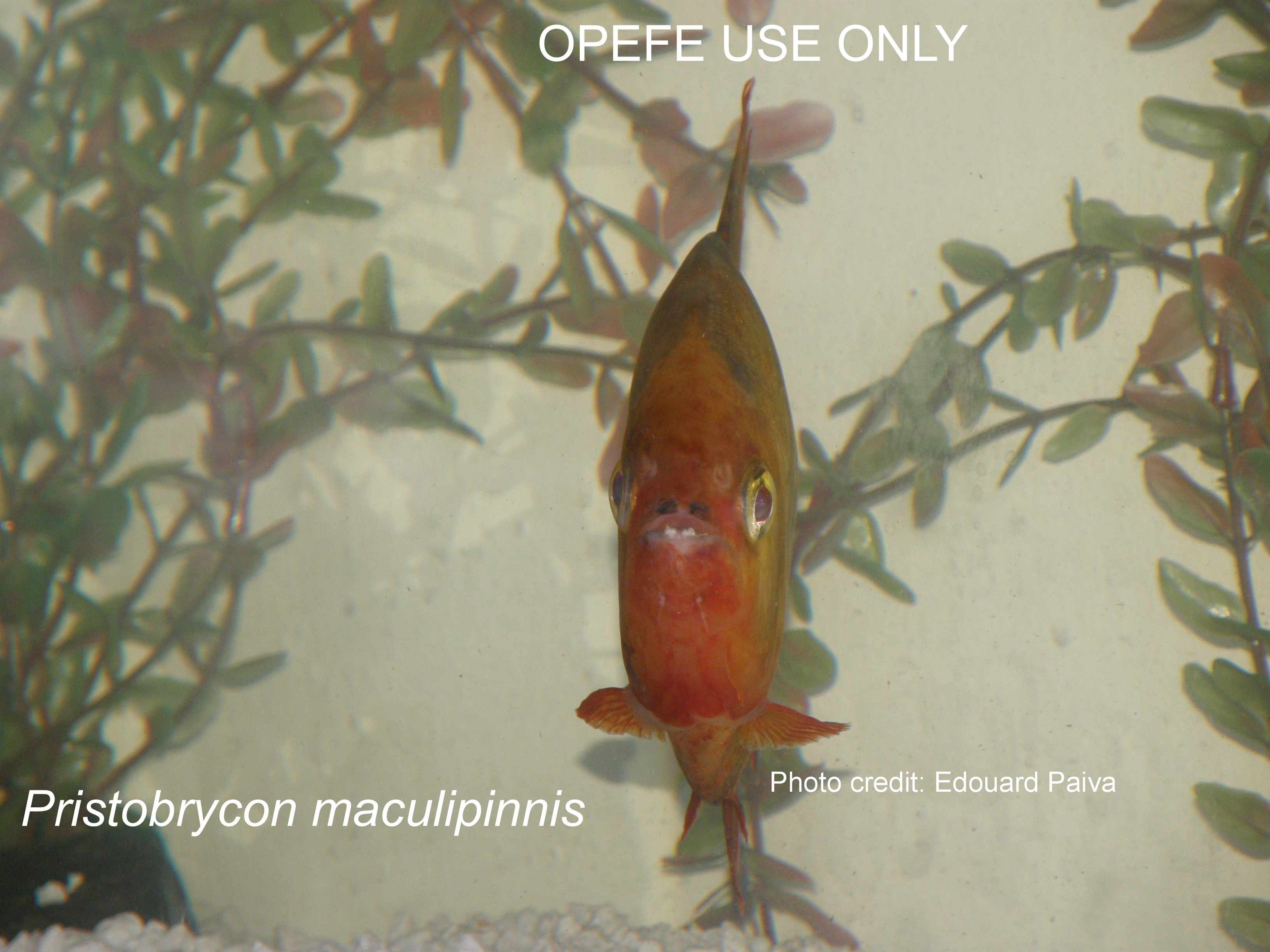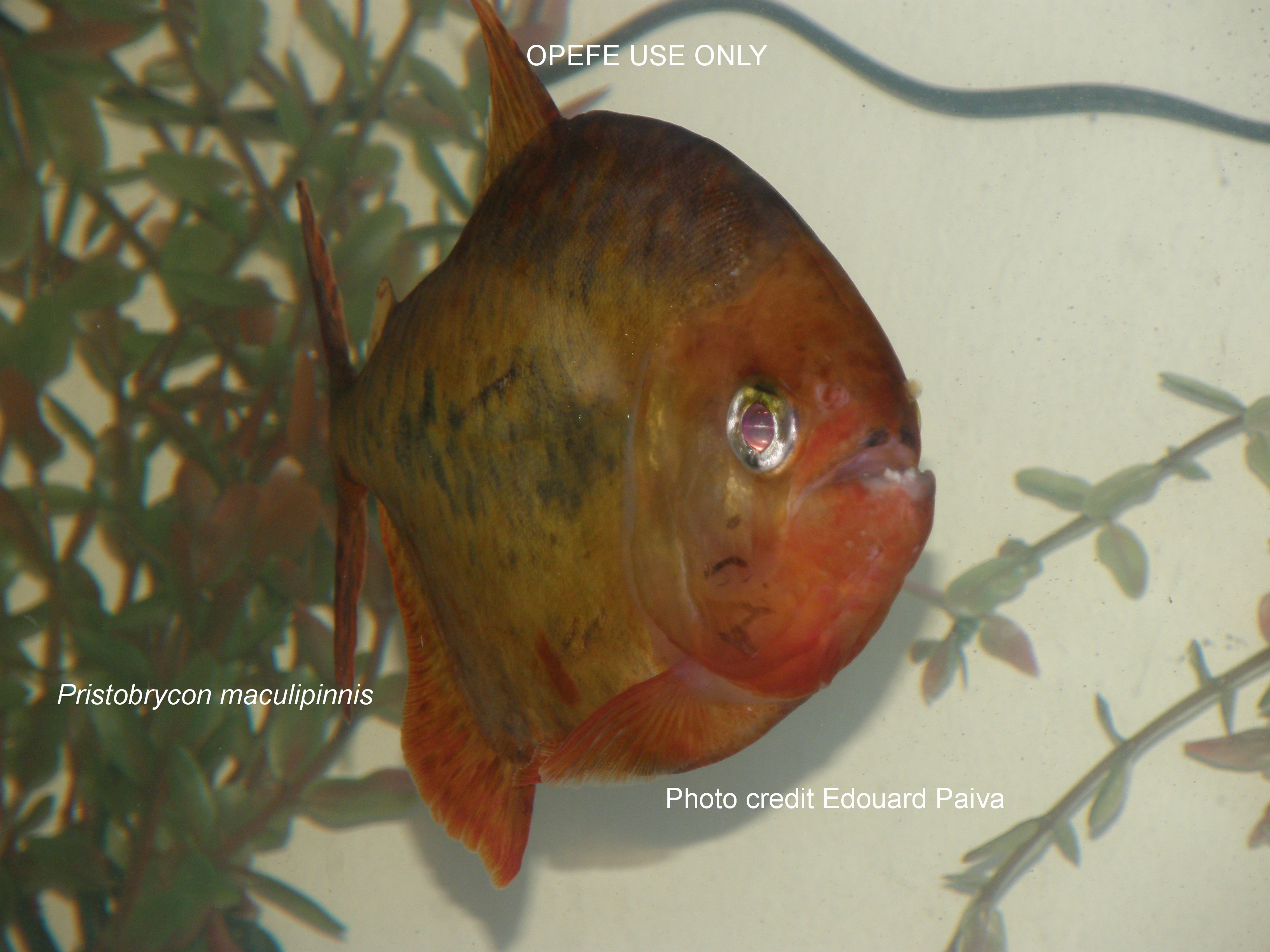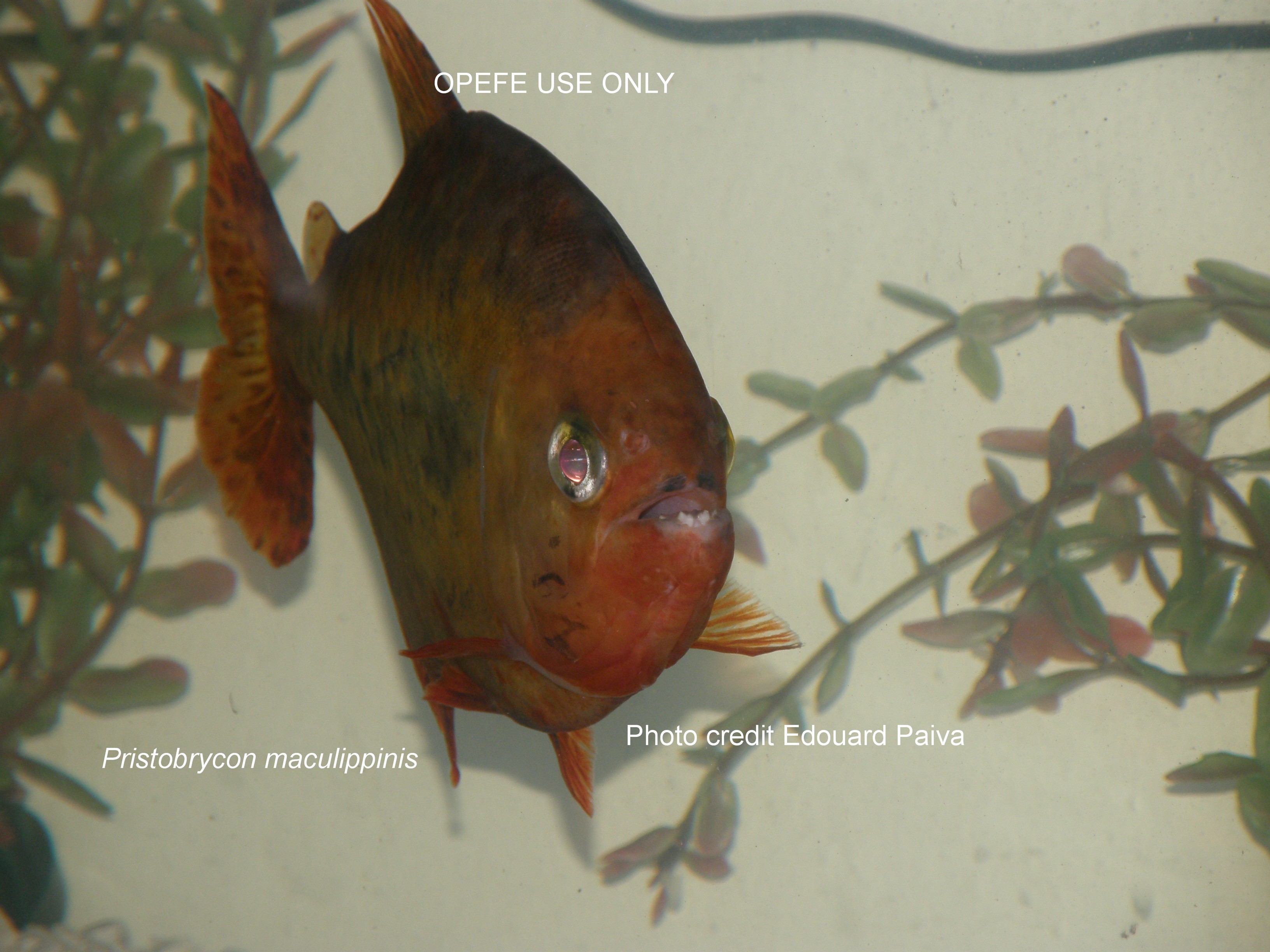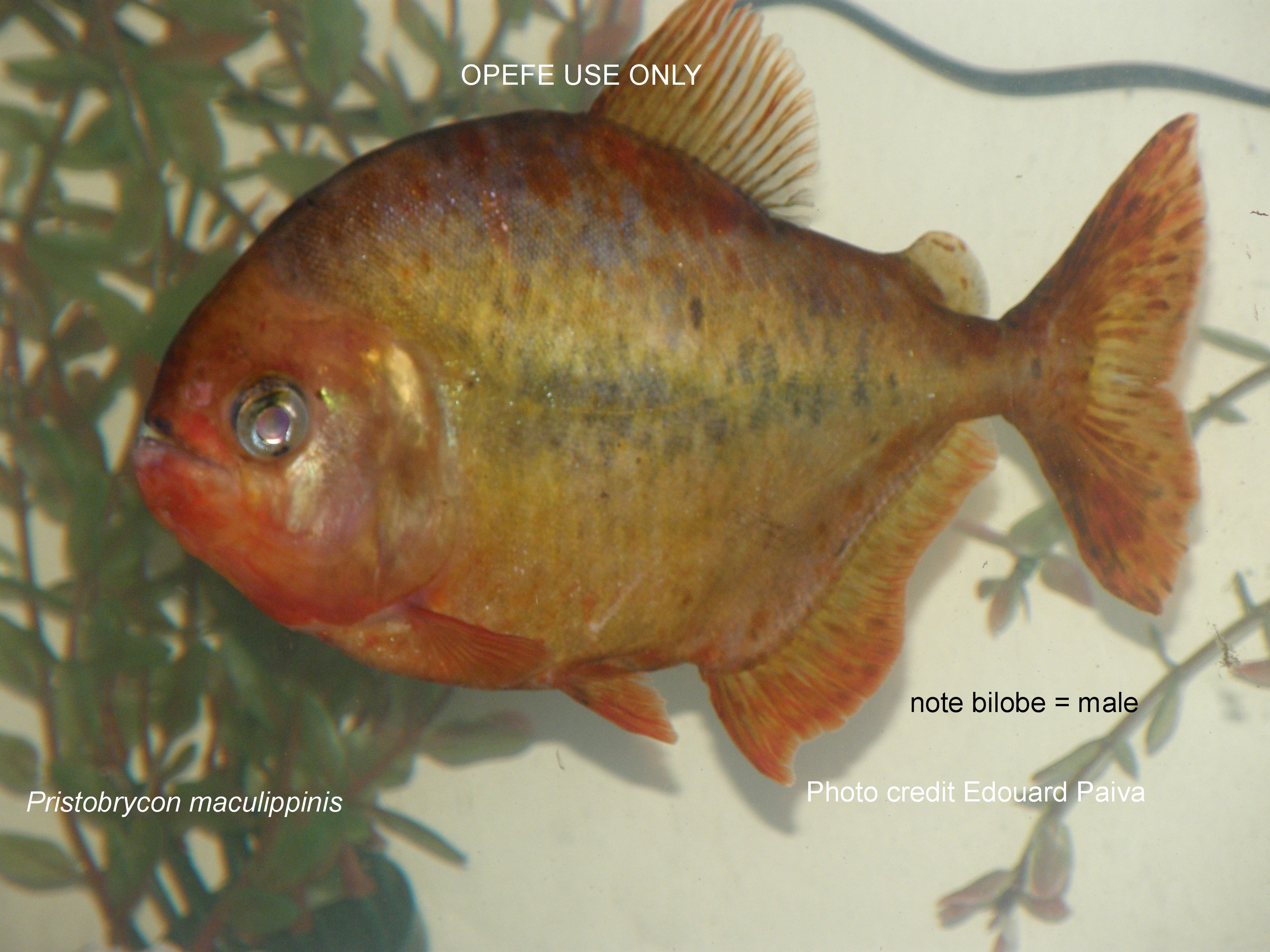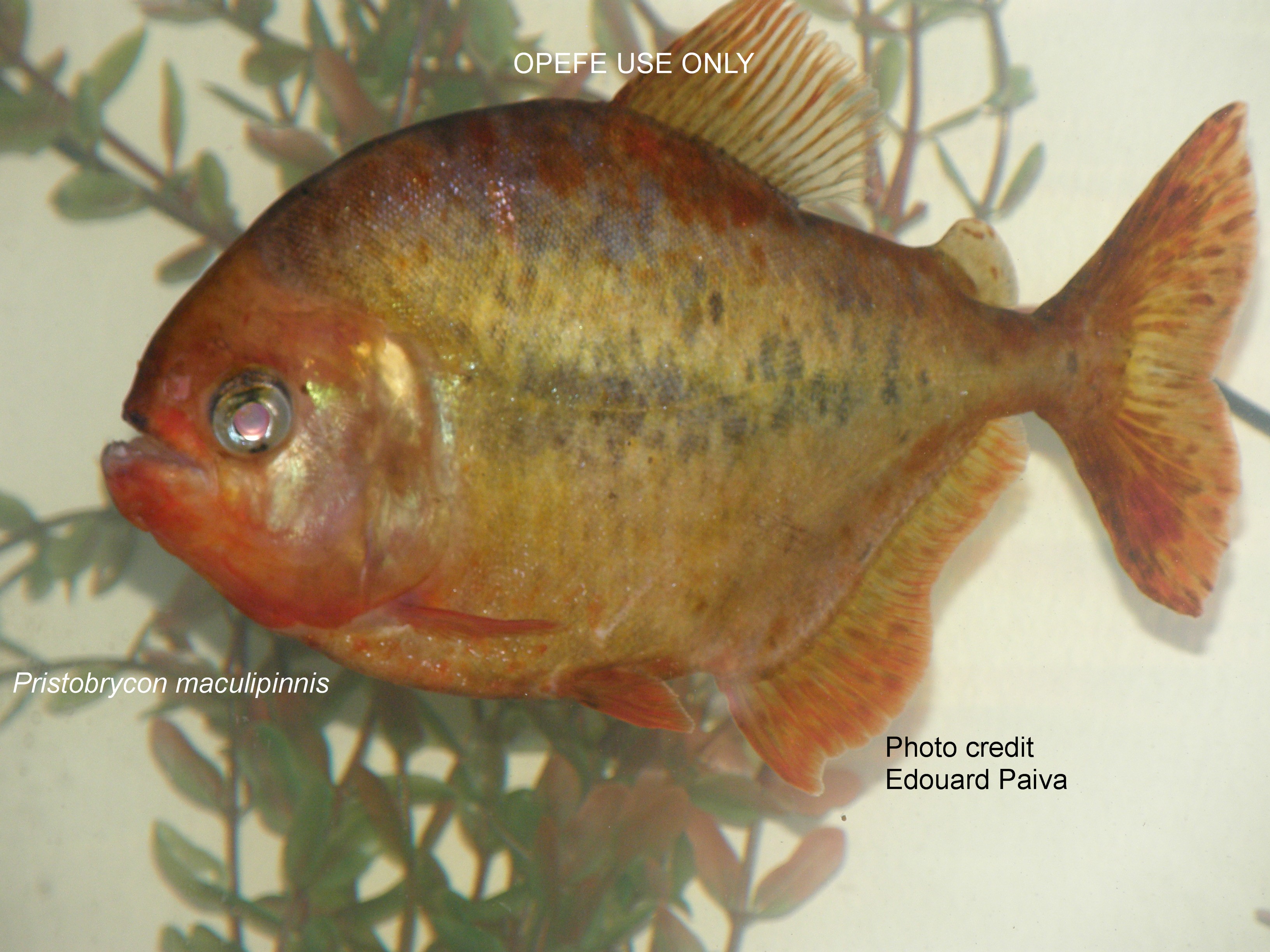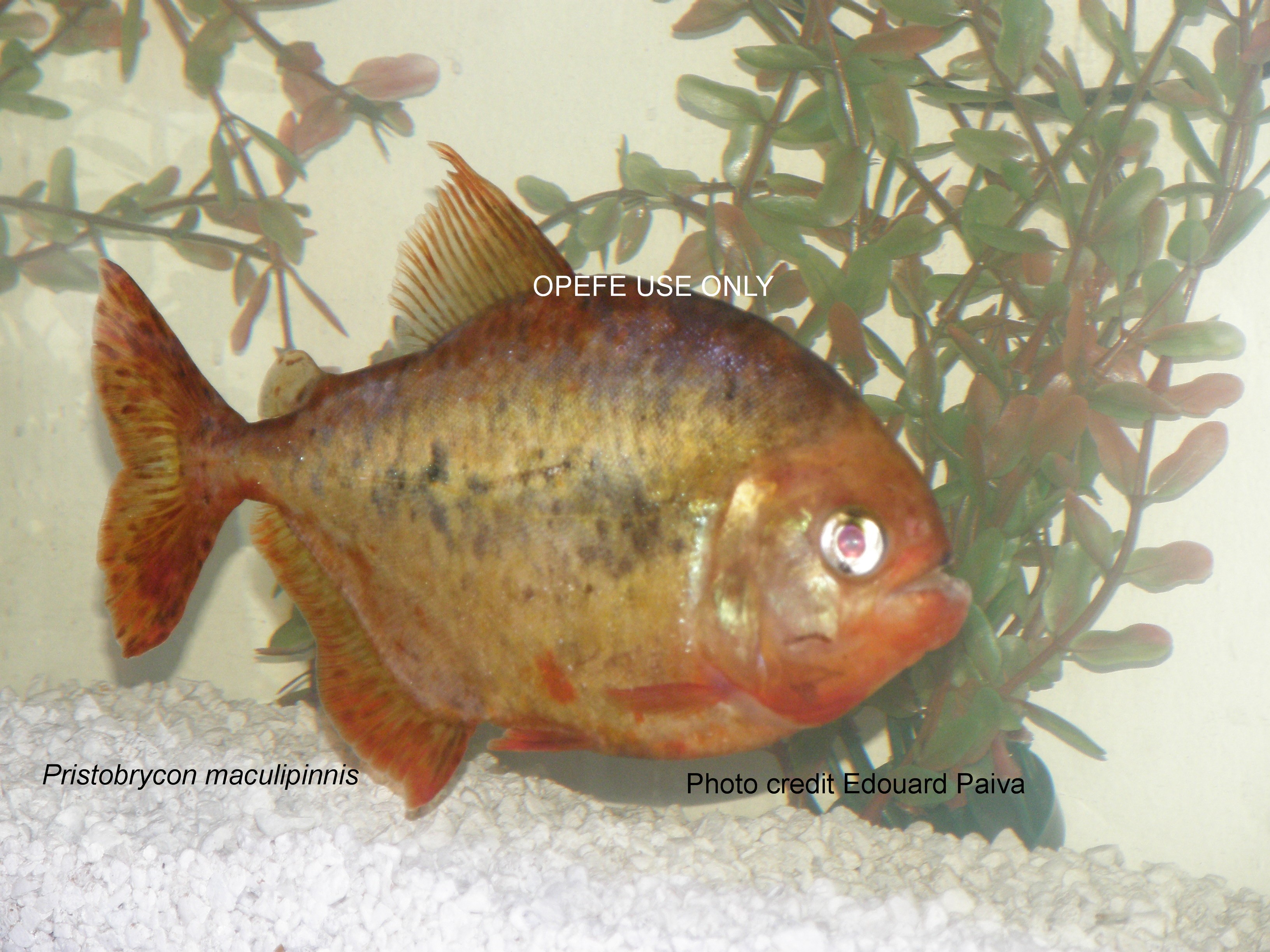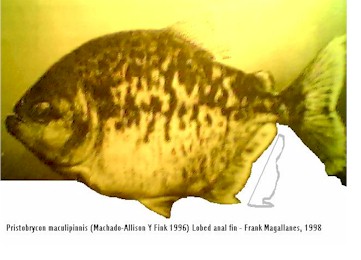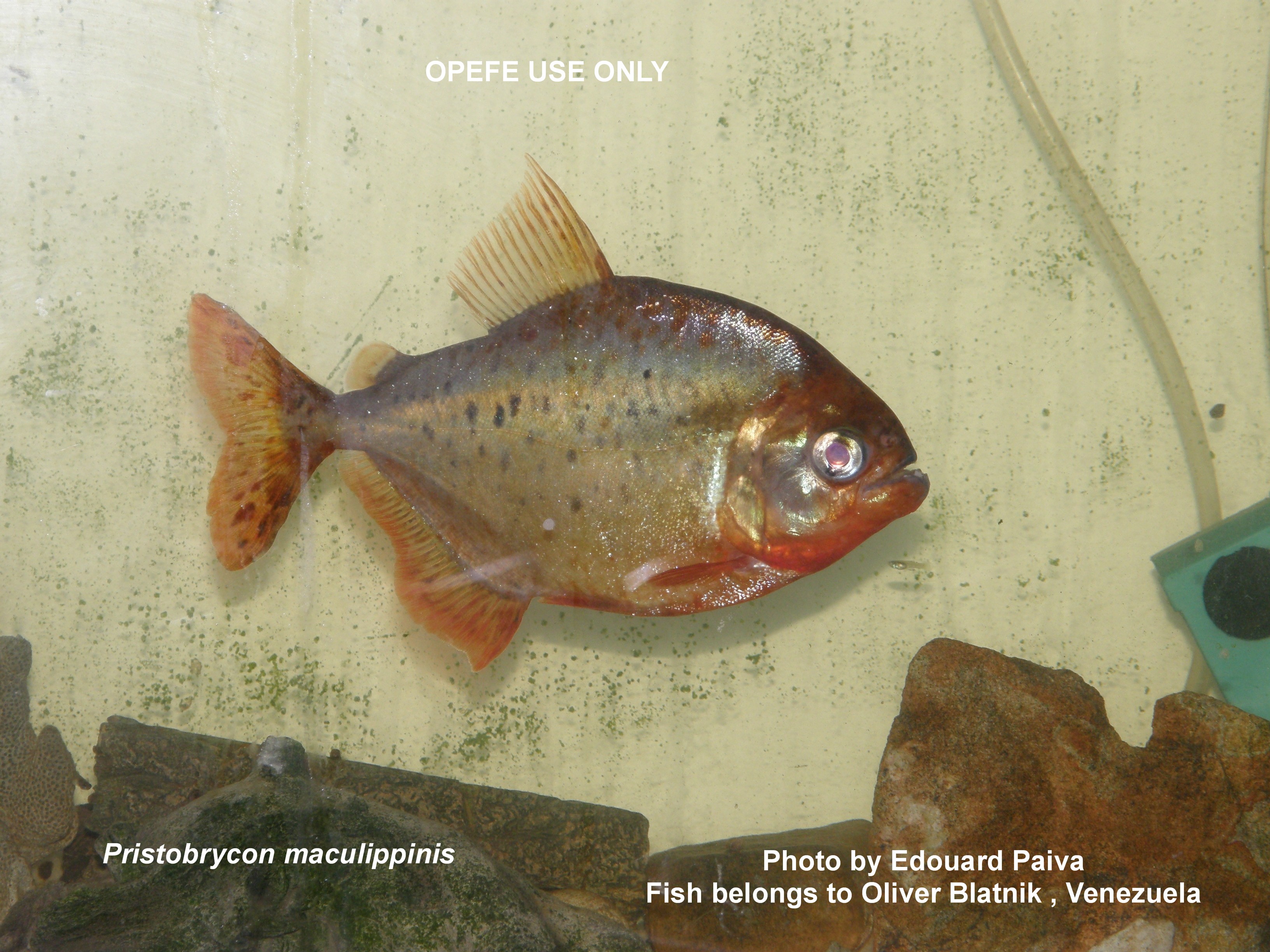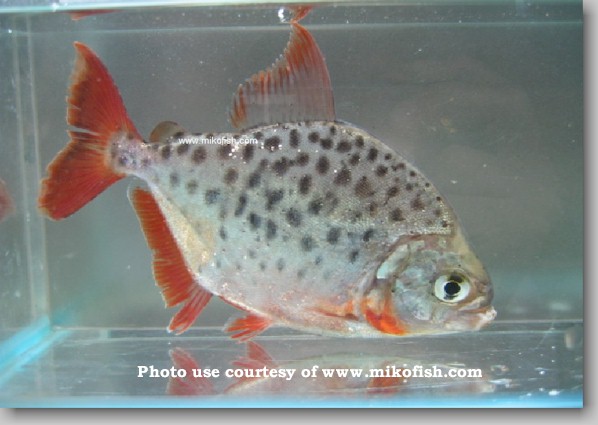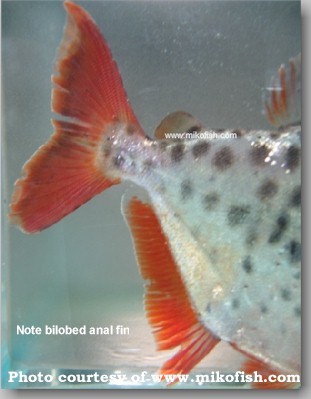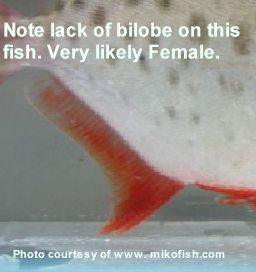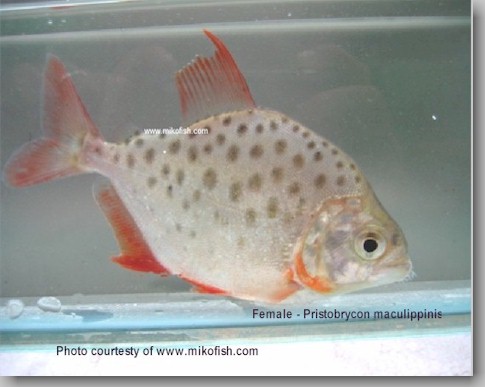Photos below property of Edouard Paiva
and exclusive use by OPEFE
FROM FRANK MAGALLANES
SEXUAL DIMORPHISM: The species appears to be sexually dimorphic based on a photograph and lobed anal fin (Magallanes, 1998 & 2006). Thanks to a fish dealer at www.mikofish.com, who provided two of the photos shown below. I have not been able to determine if this species is indeed sexually dimorphic (as of February 17, 2006). But hopefully, given this newest information (and photographs) it will not be long until it is bred either in captivity or samples are dissected to determine actual sex . This would certainly confirm sexual dimorphism. Outcome is pending on the examination.
The species is a Pristobrycon, so fin biting is likely to be excessive on tank mates. The area where P. maculipinnis is found also undergoes a period of a dry season from October - March. The rainy season runs from April - September. Other than the photo above, I have not seen this species in the hobby. The one's I have seen purported to be this species have turned out to be the Brazilian Pygopristis denticulata and a few Pristobrycon striolatus. These two species show the banding or marbled pattern common to P. maculipinnis. The best way to differentiate these two from P. maculipinnis is to exam the teeth; P. denticulata (penticuspidate) and the peppered spotting on P. striolatus.
IN THE AQUARIUM
Caribito or Palometa - Not seen by this author live and its availability in the aquarium trade is rare. It appears from recent imports, the species is becoming more available, but its present high price in the trade, may limit the amount of information available by qualified hobbyists. No information on whether or not it can be kept as a group in the home aquarium. Based on what I know about Pristobrycon their requirements would likely parallel that of P. striolatus. Recommend keeping as solitary species until more information is received.
The adults enter the flooded forest to feed on common fruits and seeds that fall onto the water. They also feed on fish and fins. (Machado-Allison and Fink, 1996).
COLOR OF LIFE
The body is silver- grey with blue and purple tinting. There are numerous irregular black markings over most of the body. This pattern produces a marbled pattern (see below) in sexually mature adults. Abdomen is red. The ventral fins have numerous dark (black) pigment. The dorsal fin, snout and lower jaw is very dark. The lateral portion of the head is similar to the body but with red pigment in the posterior opercle region. The eye is a golden-yellow, with a black band transecting. The dorsal fin is dark with black markings on the radial membranes. The extremities of the fins are reddish. The adipose fin is dark, marbled with a hyaline border on the posterior part. The caudal fin is a very dark grey with dark spotting on the membranes. The anal fin is reddish-brown, with the rays slightly dark spotted on the membranes. The pelvic fins are red.
The pattern of coloration seen with this species is more intense and darker with breeding condition.
DESCRIPTION
Discovered in 1992, this Pristobrycon presents itself with beautiful marbled appearance on the body. The body is robust and oval, while adults have a bulldog like mouth. Vertebrates 37-39, usually 38. Very small scales, lateral line 81.0-89.0, usually 85. Prepelvic serrae 22.0-24.0, usually 23. Postpelvic 8.0-11.0, usually 9. Branched spines are shot and modified, 27.0-28.0, usually 28. (Fink and Machado-Allison, 1992).
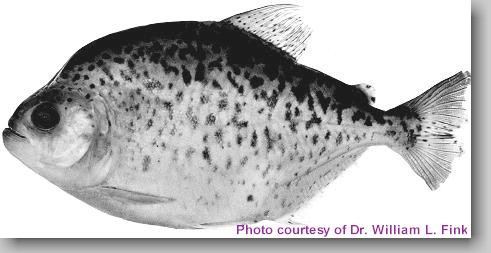 Pristobrycon
maculipinnis is a serrasalmin presenting a unique combination of features
including dark spots on the vertical fins and scattered irregularly over the
body and head, lack of a pre-anal spine, and lack of fine 'pepper-like' spots
(Fink and Machado-Allison, 1992). The fish appears like other members in genus Pristobrycon
( for example; P. striolatus and P. careospinus). However
difference is noted by its distinctive marbled coloration. Other differences
include the number of vertebrate (37-39, usually 38) while other members in this
group rarely possess more than 37. Also this species has the major count of
prepelvic spines (22-23 vs 20). Compared with P. striolatus, it does not
possess strong musculature in the jaw. See: 3 New Species, W. L. Fink.
Pristobrycon
maculipinnis is a serrasalmin presenting a unique combination of features
including dark spots on the vertical fins and scattered irregularly over the
body and head, lack of a pre-anal spine, and lack of fine 'pepper-like' spots
(Fink and Machado-Allison, 1992). The fish appears like other members in genus Pristobrycon
( for example; P. striolatus and P. careospinus). However
difference is noted by its distinctive marbled coloration. Other differences
include the number of vertebrate (37-39, usually 38) while other members in this
group rarely possess more than 37. Also this species has the major count of
prepelvic spines (22-23 vs 20). Compared with P. striolatus, it does not
possess strong musculature in the jaw. See: 3 New Species, W. L. Fink.
See Live Video of Holotype image:
DISTRIBUTION
Described from black water areas of southern Venezuela, Rˇo Pamoni (Fink and Machado-Allison, 1992). The fish is found in the rio Atacavi (Cuenca del Rio Atabapo) and Doyotomi (Cuenca del Rio Casiquiare), branch of the Estado Amazonas. These are black water fish.
MAXIMUM SIZE
24.8 cm SL
